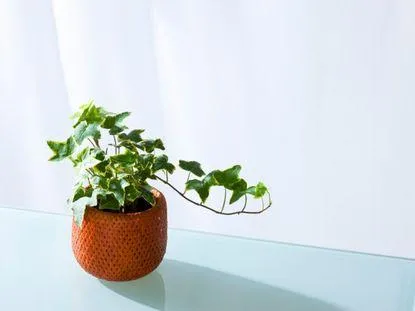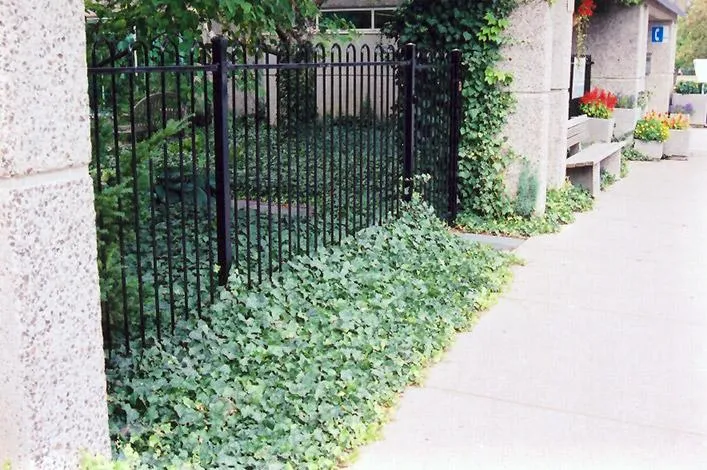A Guide to Caring for Your Common Ivy Plants
Whether you’ve got ivy growing on the sides of your house or ivy potted in your home, proper care is key to keeping these resilient vines healthy and thriving. As someone with more than a few ivy containers on my patio, I’ve learned a thing or two about common ivy care through trial and error. In this article, I’ll cover the basics of sunlight, watering, fertilizing, pruning and pest control to help your ivy put down roots—you know, metaphorically speaking since ivy has more of a grasping habit than actual roots. Hey, don’t judge, us plant lovers have a tendency to anthropomorphize our green babies!
Sunlight Needs
When it comes to sunlight, ivy is quite adaptable—it can handle full sun to part shade. But as a vine that climbs walls and trees seeking sunlight, it tends to prefer bright, indirect light. Too much direct sun, especially in the heat of summer, may cause leaf burn. So a spot with morning sun and dappled afternoon light is perfect. Ivy grown indoors does well near an east- or west-facing window to soak up those indirect rays. Just be sure not to place it right in the window where it could get scorched. Through trial and error, observe your ivy’s reaction and adjust its spot if the leaves start looking sad and crispy.
Watering Tips
Ivy prefers moist soil that dries slightly between waterings. For tropical-style English ivy, water when the top inch of soil is dry. This usually means watering every 4-7 days for indoor plants and 1-2 times per week outdoors in the summer. Less water is needed in winter. Now, overwatering is your enemy with these guys—soggy soil causes root rot real quick. From my experience, it’s easy to overcompensate when the leaves are drooping and give it way too much H2O. Just take it slow and stick your finger in the soil before drenching.

Proper Fertilizing
- Fertilize ivy monthly from spring through fall with a dilute water-soluble houseplant fertilizer.
- Or use a slow-release granular plant food every 2-3 months according to label instructions.
- I like to use fish emulsion ’cause it gives ’em that natural organic boost, if you know what I mean! But steer clear too close to bloom times.
Feeding your ivy provides the nutrients it needs to stay green and thrive. Just be sure not to overdo it—too much grub can actually harm it. Whoops, I think I’ve gone pretty far off topic from plants to weird analogies about eating. I guess I sort of have a tendency to wander off on tangents like that sometimes. Or maybe my mind just goes weird places after gardening all day! Anyway, let’s get back to ivy care basics.
Pruning and Training
Pruning ivy serves two main purposes—to control unwanted growth and encourage bushier plants. In late winter or early spring before new growth starts, trim off any obviously dead or diseased foliage. More drastic pruning can be done in summer to shape or thin overgrown vines. When training new shoots, use ties, clips or trellises to encourage growth where you want it rather than letting vines sprawl all willy-nilly. With regular pruning and training, your ivy will stay full, bushy and within bounds instead of taking over like a weed. But as any plant parent knows, it sometimes has a mind of its own!
Pest and Disease Prevention
Luckily ivy is pretty sturdy and pest-free for the most part. But check regularly for signs of pests like scale or spider mites which suck the life out of leaves. I swear those tiny critters are the bane of my gardening existence! At the first signs of infestation, isolate the plant and spray down both sides of leaves with a diluted neem oil or insecticidal soap solution. This basically suffocates or poisons the bad guys. Keeping foliage dry also discourages fungal diseases like powdery mildew. Increase air circulation and chop back any wilted or mushy leaves promptly. With a little TLC, your ivy will stay pest and problem-free.

Hopefully these ivy care tips help your vines thrive as well as mine have over the years! It can be kind of amazing how resilient these plants are despite my occasional dubious gardening skills. Like the time I may have possibly watered my porch ivy with leftover coffee remnants one night after enjoying some brews with friends—let me just say, the plant bounced back but my head did not the next morning! Gardening accidents aside, English ivy makes a terrific low-maintenance houseplant or outdoor ground cover that can tolerate a bit of benign neglect at times. With some love and basic attention, it’ll reward you with lush greenery for seasons to come. Holler if you have any other ivy questions!
So in summary, the keys to happy, healthy common ivy are:
- Bright, indirect light
- Moist soil that dries slightly between waterings
- Monthly fertilizing in spring through fall
- Pruning to shape and remove dead growth
- Pest control with neem oil or insecticidal soap if issues arise
With those fundamentals in mind, your ivy should thrive for years to come whether indoors or out. It’s a plant that’s basically impossible to fully kill despite one’s best efforts, so don’t stress too much if you hit some bumps along the way. With a little TLC, common ivy makes an easy and attractive green addition to any home or garden. Happy planting!

Common Ivy Care Tips
| Watering | Light | Pruning |
|---|---|---|
| Water whenever the top inch of soil feels dry | Partial shade to full sun | Prune back occasionally to control size and shape |
| Avoid overwatering which can cause root rot | Ivy prefers bright, indirect light | Cut back leggy growth in spring to encourage fuller plant |
| Water less in winter when plant isn’t actively growing | Some varieties can tolerate full sun if acclimated slowly | Prune dead or diseased growth anytime to improve appearance |
| Use a well-draining potting mix to prevent soggy soil | Insufficient light results in lankier, less lush growth | Trim trailing vines to keep plant tidy when trained on structures |
FAQ
-
How often do I need to water ivy?
Ivies basically need water pretty regularly, around once or twice a week. It all depends on how dry the air is where you live. In very dry areas you may need to water more, whereas in more humid places you can get away with watering less. The soil should be kept moist but not soaking wet. Ivies don’t like soggy conditions.
-
Does ivy need direct sunlight?
Most ivy varieties will grow in partial shade. They sort of can take full sun but may get scorched leaves if it’s really intense sun. Ivies do best with morning sun and afternoon shade. Either spot should keep them happy. Too much intense sun could zap the leaves, so shade is safer if you have a blazing hot patio.
-
When should I fertilize ivy?
You’ll want to fertilize ivy in the spring and summer. That’s when it’s actively growing. A small amount of all-purpose fertilizer worked into the soil every 4-6 weeks during the growing season should keep things looking lush. In the fall and winter, don’t fertilize as the plant goes dormant. But perhaps feed it one last time in very late winter or early spring to perk it up for the new growing cycle.

-
How do I trim overgrown ivy?
If ivy gets unruly and out of bounds, you’ll need to prune it back. Cut stems back almost to the ground if they’re crawling too far. For tall climbing ivy on walls or fences, simply snip off the top portions that are hanging over edges. Be ruthless – ivy grows fast so it bounces back quickly. Never cut into the old wooden part of the stem, just remove new growth. With a little yearly trimming, ivy stays neat as a pin!
Got any other ivy questions?
Feel free to ask! I’ve had some ivy for years so I’ve learned a thing or two. It’s an easy plant that’s basically impossible to kill. Unless you roast it with relentless sun or let it dry to a crisp, ivy keeps growing back. Shoot me a message if you need any other tips!
